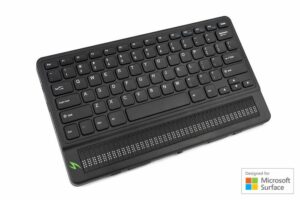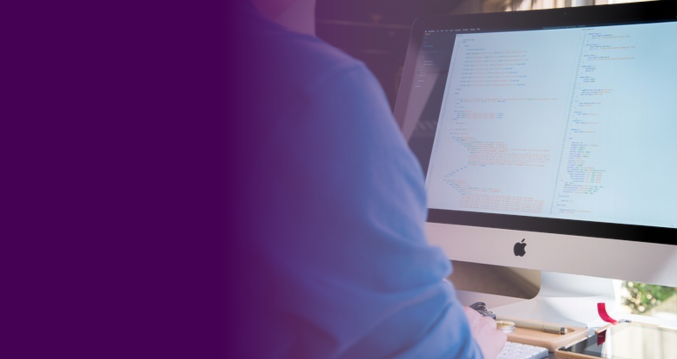Assistive Technology
People who are blind or vision impaired use a range of Assistive Technology, also known as adaptive technology, which is used for the purposes of reading and writing as well as navigating and interacting with computer or web based apps.
Screen readers
A screen reading system for use with Microsoft Windows or Apple Mac consists of a voice synthesizer and a screen reading program. The written text displayed on the screen is translated through the voice synthesizer which then reproduces the text as speech. A screen reader will also read back other elements that may be present on the screen such as menu options, text boxes, buttons, links, heading. etc.
VoiceOver is a fully featured screen reader that is built into Apple operating systems and can be used across all Apple devices. The most commonly used screen reader for Windows PC environments is Jaws, but NVDA is also used widely.
Watch the NVDA demo by nvAccess:
Many screen readers are also designed to work with electronic or refreshable braille displays.
Braille
 Braille is a system of reading and writing by touch. A Braille cell consists of six dots. The raised dots are arranged in combinations that make up letters of the alphabet, numbers, and punctuation marks.
Braille is a system of reading and writing by touch. A Braille cell consists of six dots. The raised dots are arranged in combinations that make up letters of the alphabet, numbers, and punctuation marks.
Braille can be produced as a hard copy using an embosser, however electronic braille displays are now more common.. These are connected to a computer and translate the information on screen to tactile refreshable set of Braille cells where the dots are raised and lowered electronically.
Screen Magnifier
A screen magnifier enlarges whatever is already on the screen. The magnified area can be adjusted to full screen, lens, line and other views. The mouse and cursor have a variety of options to increase visibility such as size colour and use of crosshairs. Other features include a variety of adjustments for colour schemes and contrast.
Zoom (not the video conferencing app) is included with Apple as part of their accessibility suite and can be used across all Apple devices. Zoom Text is the most commonly used screen magnifier for Windows PC.
Watch the Zoom Text demonstration by Sight and Sound Technology.
CCTV
CCTV (closed circuit televisions) are electronic magnifiers that use a camera to project a magnified image onto a monitor. These devices are used by people with low vision for reading hardcopy materials, writing, viewing photographs, etc. They are available as desktop stand-alone and portable hand-held versions.
Mobility Aids
Mobility aids, such as white canes or dog guides*, are used by people who are blind or vision impaired to move around safely and identify obstacles that may be in their path. The user will have undertaken training to ensure they can use their mobility aid safely. Dog guides are legally permitted to accompany a person almost anywhere, including the workplace.
Mobility aids can be used in conjunction with a sighted guide. Watch the video by Visibility to learn great sighted guide techniques.
*Dog guide is a generic term for Guide Dogs and Seeing Eye Dogs.
Beacon Technology
Beacon Technology can be installed in a workplace to assist someone to locate meeting spaces, reception areas, facilities, emergency exits and other areas of a building. Beacon Technology is not only helpful to people who are blind but anyone who may be unfamiliar with a location and needs to find a specific place or facility.
Beacons are small, wireless transmitters that use low-energy Bluetooth technology to send signals to other smart devices nearby. Beacon Technology can be used to provide assistance with way finding, where a person will receive directions on where to locate features within a certain location.
One example of a company providing Beacon Technology is Bindi Maps.


